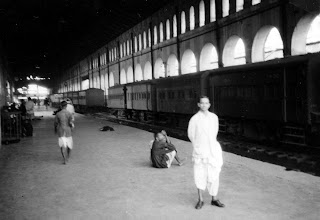 Kalikata
Kalikata was one of the three villages which were merged to form the city of Kolkata (formerly, Calcutta) in India. The other two villages were
Gobindapur and Sutanuti.
Job Charnock, an administrator with the
British East India Company is traditionally credited with the honour of founding the city. He settled in the village of Sutanuti.
Kalikata was much less important than Sutanuti and Gobindapur, and this, along with the consequent abundance of space, afforded the British room to settle there. While both Sutanati and Gobindapur appear on old maps like Thomas Bowrey’s of 1687 and George Herron’s of 1690, Kalikata situated between the two is not depicted. However, one variant of the name, ‘Kalkata’, is shown in Abul Fazal’s Ain-i-Akbari (around 1590).
Job Charnock landed at Sutanuti on 24 August 1690 with the objective of establishing the company’s Bengal headquarters. As Kalikata did not have any settled native population, it was easy for the British to occupy the site. In 1696, construction of old Fort William began (near the site of the present day General Post Office) without legal title to the land. Legal title was eventually secured on 10 November 1698 when Charles Eyere, Job Charnock’s son-in-law and ultimate successor, acquired the zemindari (land-holding) rights from the Sabarna Roy Choudhury family, the zemindars (land lords) of the area.
In Colonel Mark Wood’s map of 1784, published in 1792 by William Baillie, Dhee or Dihi (meaning village or group of villages) Kalikata is shown as extending from Jorabagan Ghat to Baboo ghat.
Kalikata was called ‘Calcutta’ by the British and the metropolis that grew around it acquired that name; it was renamed Kolkata in 2001 as per the colloquial Bengali version of the name.
In addition to the three recognised hamlets around which the city has grown up, must be added at least four others as the elementary constituents of the city (including Howrah on the opposite bank.) These are Chitpur, Salkia, Kalighat and Betor. Out of these four Betor, which was the focus of trade once upon a time, vanished in the seventeenth century. It was located around where Shibpur presently is!!
 In 1854 the British colonial government in India started building a rail link from Kolkata to the coalfields in Bardhaman district. (This was the second railway line constructed in India after the first one from Mumbai to Thaney in 1853). The line started from Howrah, then a small town at the west shore of the river Hooghly River.
In 1854 the British colonial government in India started building a rail link from Kolkata to the coalfields in Bardhaman district. (This was the second railway line constructed in India after the first one from Mumbai to Thaney in 1853). The line started from Howrah, then a small town at the west shore of the river Hooghly River.

























